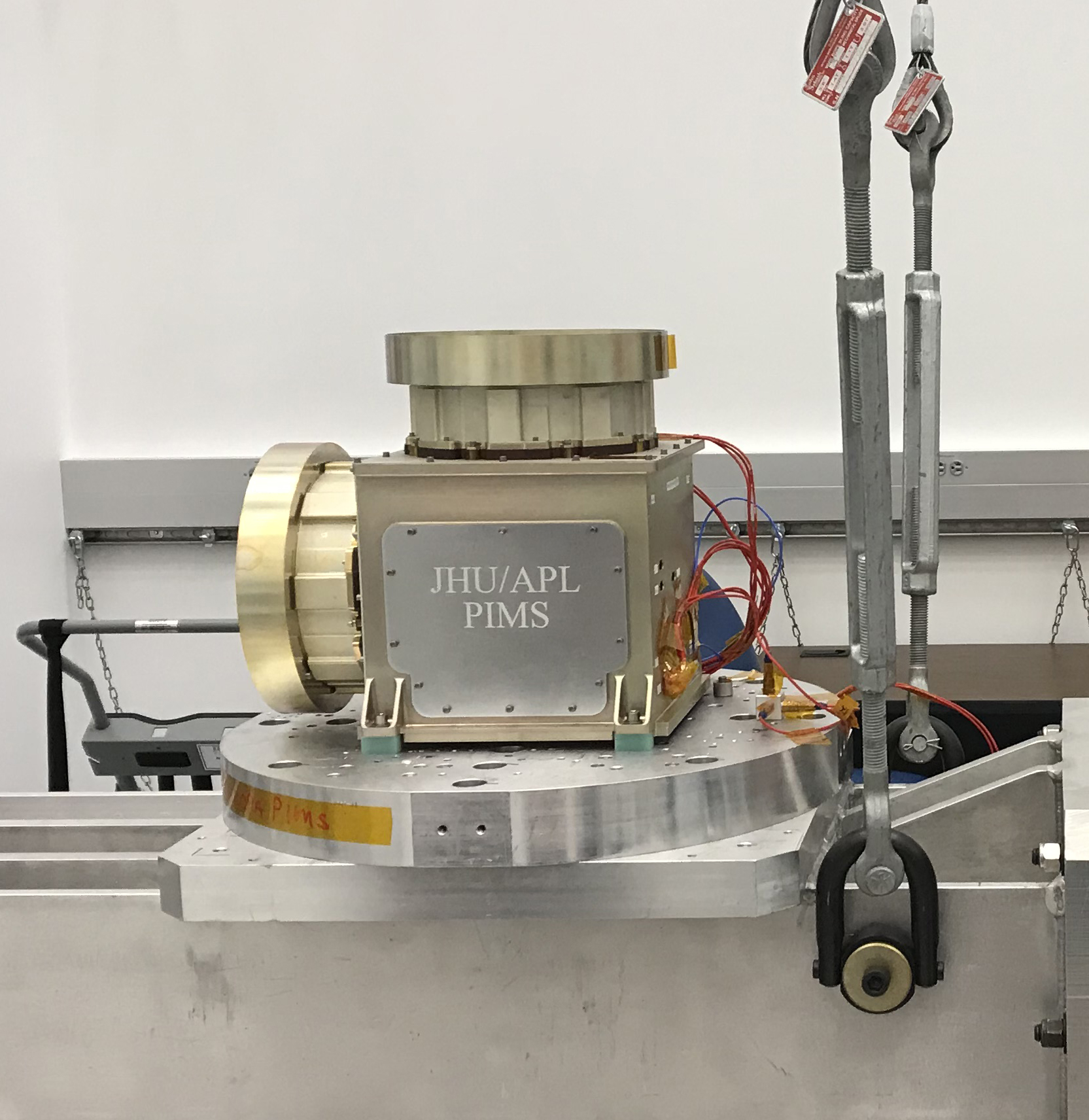Press Release
Johns Hopkins APL Plasma Instrument for Europa Clipper Passes Critical Design Review
First of Two Lab-Built Instruments for Historic NASA Mission to Jupiter's Moon Begins Flight Construction
The team building the Plasma Instrument for Magnetic Sounding (PIMS), one of nine science instruments on board NASA’s Europa Clipper mission to make multiple flybys of Jupiter’s moon Europa, has passed its critical design review (CDR) and has begun construction of the flight instrument and other systems.
PIMS, built by the Johns Hopkins Applied Physics Laboratory (APL) in Laurel, Maryland, will measure the plasmas, or electrically charged gasses, in Europa’s ionosphere (the moon’s upper atmosphere) and Jupiter’s magnetosphere (created by the planet’s magnetic field). These plasma measurements will contribute to other data used to determine the thickness of the ice shell that covers Europa, and the depth and makeup of the liquid-water ocean below that shell.
PIMS will do this by taking advantage of the rapidly flowing plasma that connects Europa to Jupiter. This plasma, which moves at more than 220,000 miles per hour and rotates with Jupiter, constantly ebbs and flows over Europa, much like water in a stream over a rock. The plasma interacts with neutral and ionized gasses surrounding Europa and with ices on the surface of the moon, producing radiation damage, ionization and other effects that will modify the ice composition.
“We put PIMS through extremely thorough testing, and we’re excited to begin construction of our flight instrument,” said APL’s Joseph Westlake, the instrument’s principal investigator. “In addition to vibration and shock testing, we simulated every environment that PIMS will experience from Earth to Europa, and it passed with flying colors.”
The instrument — which is shielded to protect it from the high radiation around Jupiter — has two identical sensors mounted on opposite sides of the Europa Clipper spacecraft. The two sensors provide a large entrance to study the plasma. The plasma sensors are Faraday cups, which capture and measure the current from charged particles in the plasma. When combined with magnetic field data, information from PIMS will help reveal details about Europa’s structure unable to be determined from Earth-based observations.
